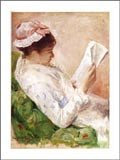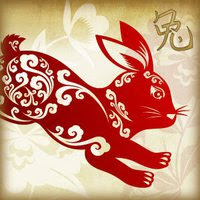 Lisette's List: A Novel by Susan Vreeland
Lisette's List: A Novel by Susan VreelandMy rating: 5 of 5 stars
A spectrum of colors created from ocher, mined and mixed to create a palette for Cezanne. Lavender growing wild and scenting the Provencal village of Roussillon. Fresh goat cheese and eggs in a creamy omelette. Gritty marzipan on your tongue. An old man's voice, telling stories that stitch together two centuries of art. All of the senses are engaged in Lisette's List, a novel about the power of art to engage the human instincts to survive, learn, and grow.
Lisette and André Roux love Paris, where they have been building a life amongst the galleries and cafes filled with art and artists. Reluctantly, they move to Roussillon to care for Andre's grandfather, Pascal, who has written to them, exaggerating his illness. Pascal is eager to pass on the paintings he purchased by working as an ocher miner and frame-maker for artists, including Cezanne and Pissaro. More, though, he is desperate to pass on his memories of these men, and his own wisdom about art, from appreciation of techniques and color to his near-mystical belief in the power of art to expand one's life.
While André looks for work, Lisette tends the house and listens to Pascal, whose tales are sculpted from detailed, annotated lists he has written. Lisette begins a list of her own, "Lisette's List of Hungers and Vows," beginning with "Love Pascal as a father." Her list grows throughout the book as she experiences heartbreak, learns to live and love in the small village, and searches for Pascal's paintings, which André concealed before he went to war.
Vreeland provides glimpses into the German occupation in Provence, how some in the resistance had to compromise, and the Nazi destruction of art deemed "decadent." She displays the spectrum of ocher - from deep cadmium yellow and gold through maroon and cream, in a fictional, composite still-life by Cezanne, where the colors delineate the artist's choice of shapes, and support his artistic play with gravity and perspective. Gravity is also a plaything for Marc and Bella Chagall, hiding in a nearby house, painting joyous portraits or people who play violin on the roof and communicate with God.
("Try not to be envious," writes Lisette. "Learn how to be self-sufficient.")
Twice, Vreeland evokes a particular, peaceful, silent scene -- once, when Lisette and André's friend Maxime observe a magpie who alights on a snowy fence rail, and once, when they see Monet's painting of that scene. Moments like these, with Vreeland's knowing commentary, bring the reader along as Lisette and a shell-shocked veteran come to terms with the war that split apart their lives, and travel along the path to healing through art and forgiveness.
Note: the paintings and photographs of the village are posted at Susan Vreeland's website, along with quotes from the book. Do look at them as you read.
Thanks to NetGalley for an ARC of this book. This is an honest review.
View all my reviews

